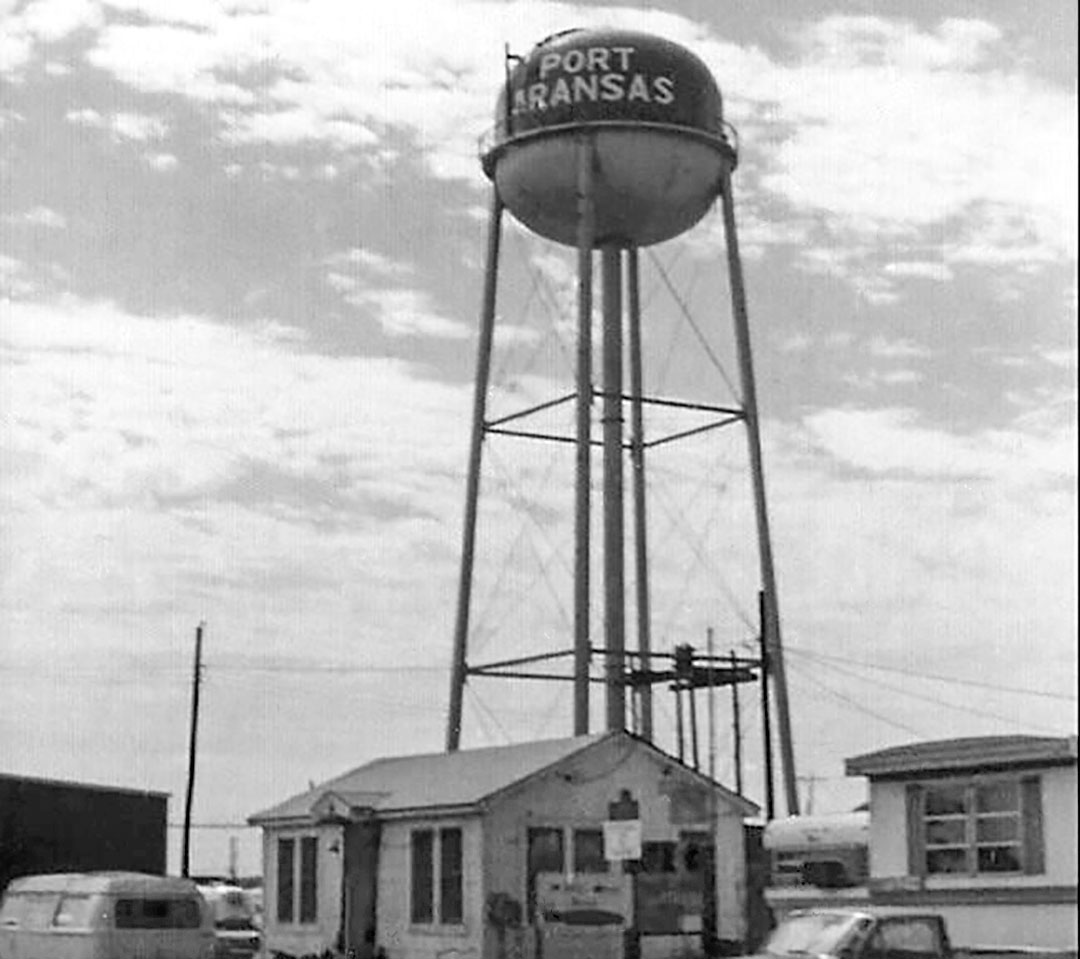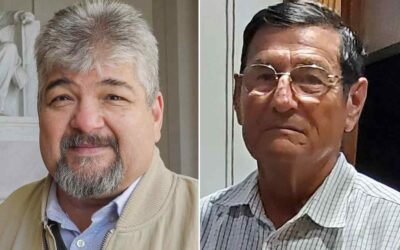
Photo: The Nueces County Water Control and Improvement District No. 4’s 1959 elevated water tank that held 150,000 gallons.
If you have bought rural property, you can appreciate the question, “What is the water source?” That was on the mind of the pioneers who settled Mustang Island in the 1850s. They tackled the water problem with 17-foot wells, later supplemented by cypress cisterns to capture rainwater.
The island’s wells were troublesome; the water could become so brackish it was no use at all, and wells often dried up altogether. Besides the mineral-laden water being just drinkable, it was also the nemesis of laundry day: Soap would barely make suds, and the hard water made white clothes look perpetually dingy. Clearly, if Mustang Island was to grow and develop, her water problems had to be solved.
“Port Aransas, which was a small fishing village until a few months ago… is undergoing phenomenal development by Gail Borden Munsell interests.”
Those words from the 1931 Texas Almanac foretold the next island water chapter.
The opening of a roadway between Aransas Pass and the Harbor Island ferry landing marked the birth of full-family (versus sportsmen) tourism, and hence a great influx of people onto the island. G.B. Munsell, a Connecticut entrepreneur interested in developing Port Aransas, foresaw that surge when he established his privately owned Mustang Island Utilities Company in 1928.
Among other services, MIUC provided the first community water works of several hundred wells, two pump stations, a wood water tank, and 1- and 2-inch lines branching through town. For $3, a residence could be tied into the system, and there was no monthly usage charge. While MIUC did much to organize water service, it still delivered a product having the disadvantages previously described.
After World War II, the need for higher quality water caused the intervention by those governing the town.
The City of Port Aransas acquired and ran the MIUC water works starting circa 1950. In 1952, the community elected to form the Nueces County Water Control and Improvement District No. 4, which acquired the water works from the city in 1956. The district used bond monies ($590,000) in 1958-59 to connect Port Aransas with the Ingleside water treatment plant, erect a 150,000 gallon water tower, and install 6- and 8-inch water mains in town.
In 1959, Port Aransans could finally open their taps and enjoy clean and clear mainland water — and have a satisfactory laundry day! With potable water flowing, the district focused on doing away with the hundreds of island septic tanks. Bond monies ($535,000) financed a sanitary sewer collection system and treatment plant in 1962, and today the district holds the permit to build another treatment plant as needed.
The southward expansion of Port Aransas in the 1970s (e.g., Gulf Shores Condominium, Mustang Island State Park) spurred the district to install a 12-inch pipeline to North Padre Island, where it tied into the Corpus Christi water supply.
Today, Port Aransas receives 25 percent of its water from Ingleside, 75 percent from Corpus Christi. The Nueces County Water Control and Improvement District No. 4 continues to manage water on Mustang Island. The district is debt-free and self-supporting, delivers more than 700 million gallons of water a year, treats 1.88 million gallons of sewage per day, and is well prepared for future island growth.
First published in the Port Aransas South Jetty August 1, 2013.
John Guthrie Ford

Ford authored several books about the history of Port Aransas, transcribed the Mercer Logs, was responsible for multiple exhibits at the Port Aransas Museum and was an interviewer for many of the oral histories for for the PAPHA archives.
Ford also wrote a history column for the Port Aransas South Jetty, called History Corner, and wrote historical articles for the Port Aransas Museum newsletter starting in 2007.
The Dr. John Guthrie Ford History Award is presented by PAPHA for historical scholarship.



